The HDZero Nano Lite is the smallest and lightest digital FPV camera in existence. With a weight under 1.7 grams, it will let you add HDZero to even the smallest 1S builds. In this review, I’m going to examine the Nano Lite’s physical design, feature set, and image quality to help you determine whether this camera is the right choice for your next FPV whoop or micro drone build.
Where to Buy
Note: The product links on this page are affiliate links. I earn a small commission if you purchase products through these links. For more information, see my affiliate link policy.
You can find the HDZero Nano Lite at the following stores:
You can also find the Nano Lite as part of the HDZero Whoop Lite bundle, which includes the Nano Lite camera, Whoop Lite VTX, an antenna, and a MIPI cable, all at a discounted price. It’s available at more stores:
Design and Specs
Here are the key specs of the HDZero Nano Lite:
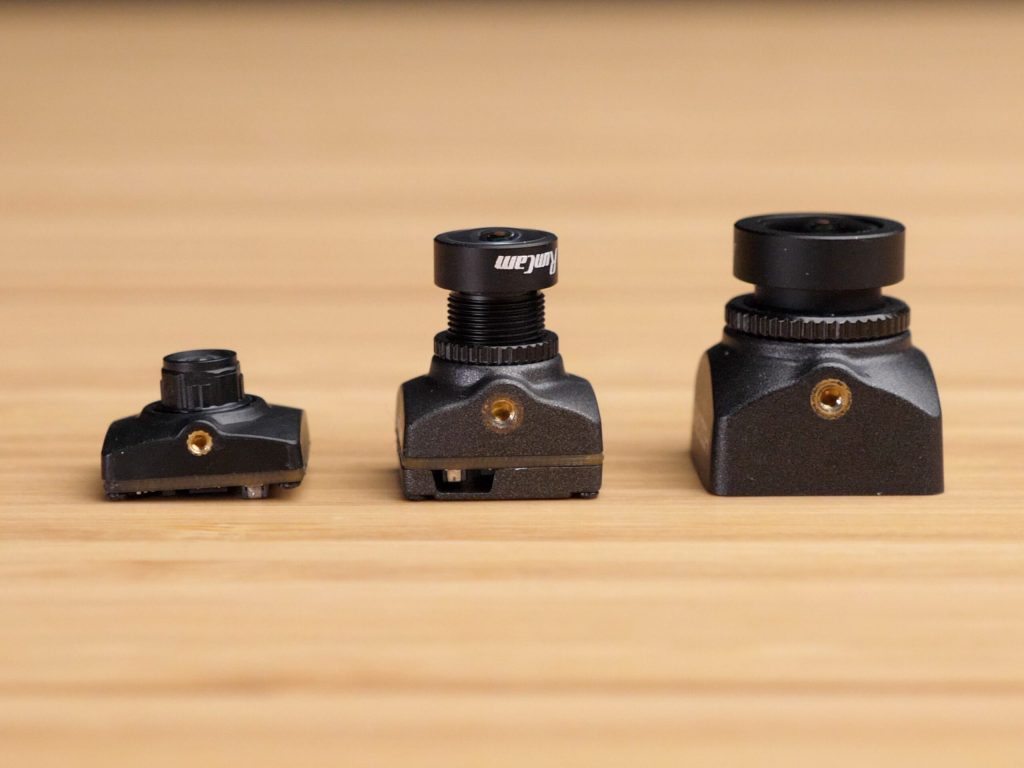
- 720p at 60fps
- 4:3 and 16:9 aspect ratios (switchable)
- 14×16 mm dimensions
- 1.69 grams
- M8 lens, but smaller than most M8 lenses
- M1.4 screw holes for mounting
- Standard HDZero MIPI connector
The HDZero Nano Lite has the same 14 by 16 millimeter mounting dimensions as the other HDZero nano cameras, but it’s much shallower and significantly lighter than any other digital FPV nano camera. At 1.69 grams, the Nano Lite is even lighter than many analog FPV cameras intended for whoops–for example, the Caddx Ant Lite, a popular choice for the lightest builds, comes in at a comparable 1.7 grams. This is an impressively low weight, and goes a long way toward making HDZero a viable option for 1S whoops.
One oddity about the physical design of the HDZero Nano Lite is that it uses M1.4 bolts for mounting, rather than the M2 size we see on most FPV cameras. This can be annoying because you’re less likely to have these bolts on hand, and you may find that the holes in some whoop canopies are too large to use with M1.4 bolts. Of course, the camera includes a set of the mounting bolts, and this is also the common size for mounting whoop motors, so you may have some extra on hand already.
The lens on the Nano Lite is an unusually small lens reminiscent of the type used on cameras such as the Runcam Nano 3. It uses standard M8 threaded and can be easily removed, but it’s not yet clear whether this lens can be easily swapped out with an aftermarket replacement.
Sensor and Settings

Interestingly, the HDZero Nano Lite contains the same V2 sensor used in the HDZero Micro V2 and Nano V2. This is impressive engineering given the particularly small size of this camera, and is encouraging to see given the excellent performance of that sensor in the larger cameras. This puts us in a position of having 3 HDZero cameras of different sizes that all use the same sensor and image processor–a nice state of flexibility and buying options for the HDZero system to be in.
This also means that the Nano Lite supports the same settings menu we’ve seen on the other HDZero cameras. There are a lot of settings available, and a lot of potential for adjusting the image to suit your preferences. The settings menu also provides some welcome usability features, such as the ability to flip the camera image for cases where you accidentally or purposely install the camera upside down.
On the Nano Lite, I found it to be particularly important to adjust the image quality settings from their defaults. This camera greatly benefits from setting Contrast and Sharpness to High, and Saturation to its maximum value of 7. These are the settings I used for my testing, and I recommend you start with those settings when you first use the camera.
Image Quality
The HDZero Nano Lite exhibits very good image quality, especially given its small size. I found myself expecting to grade on a curve, and do feel that this camera falls short of the best image quality I’ve seen with HDZero, but I found myself impressed with its overall performance.
Indoor flight is a common use case for whoops, and the Nano Lite performs well here. Indoor locations tend to be less well-lit in general, and it’s common to fly through obstacles in particularly dark areas, such as under tables or behind furniture. The Nano Lite handles these situations easily, and I found myself appreciating the extra resolution and detail when trying to navigate around obstacles indoors.
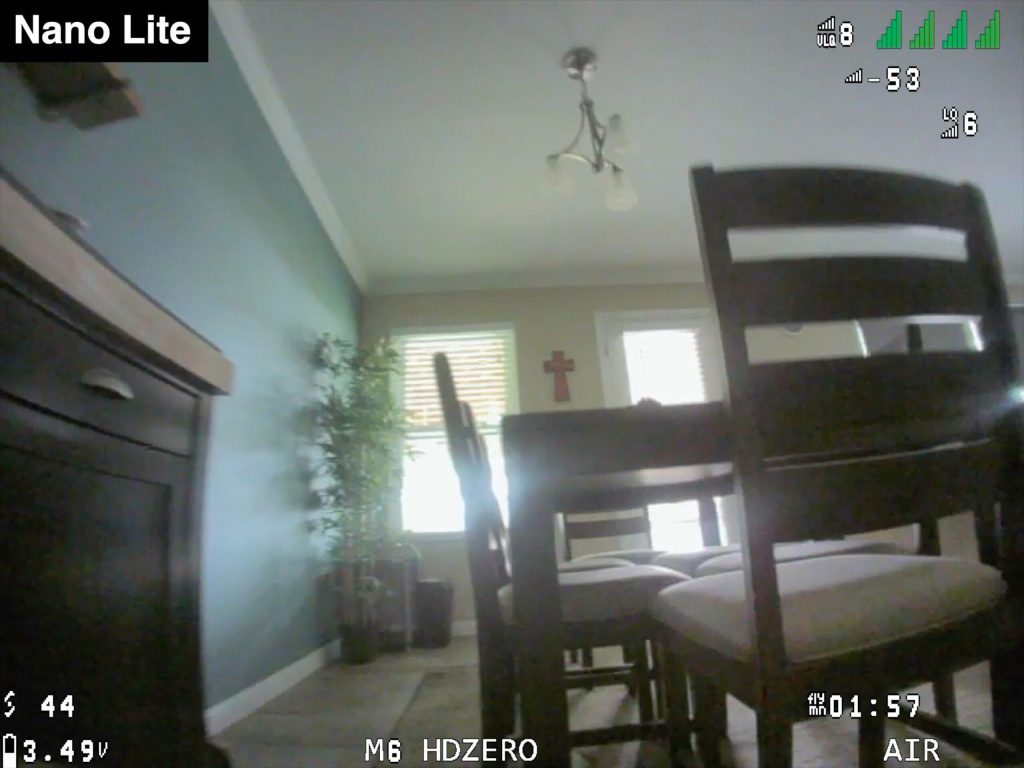

The camera maintains an acceptably low noise level even in darker areas, and the image stability and lack of interference noise on HDZero makes the Nano Lite much more pleasant to fly indoors with compared to an analog camera. I found myself flying faster and generally having more fun as a result of the improved image quality.
Outdoors, the colors from the camera are the same warm, true-to-life colors we’re used to from the HDZero Micro V2 and Nano V2. Color saturation is also better than most cameras I’ve seen, although the Nano Lite doesn’t tend to reproduce colors as vividly as the Nano V2 or Micro V2, even with the saturation setting on maximum.
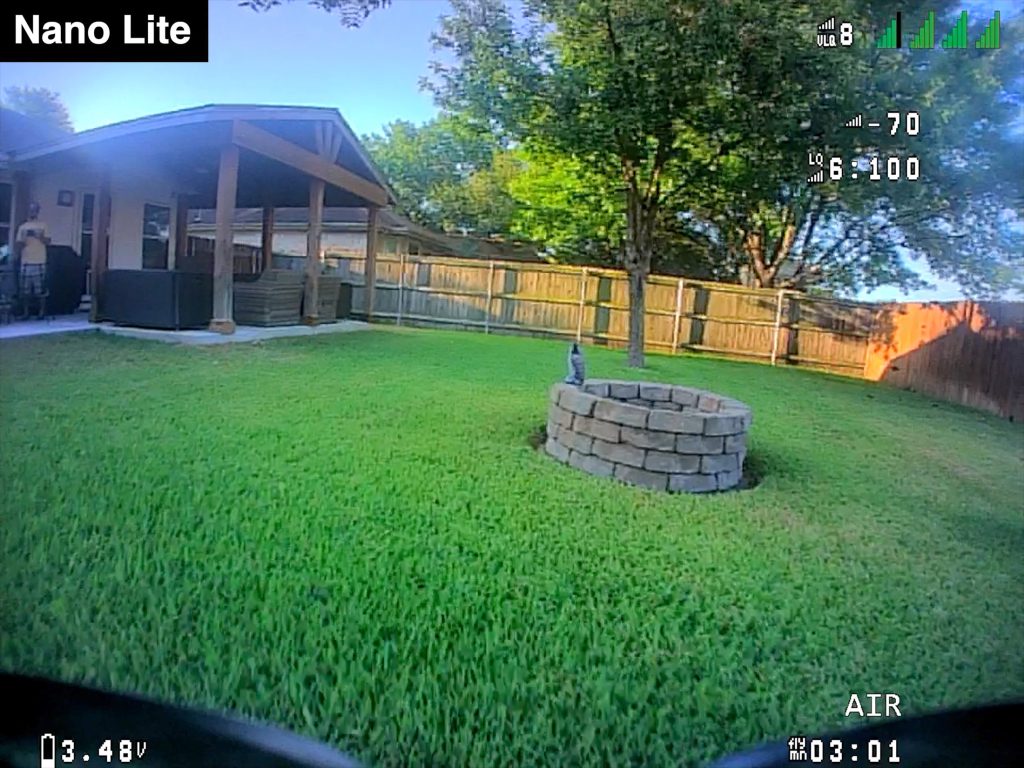

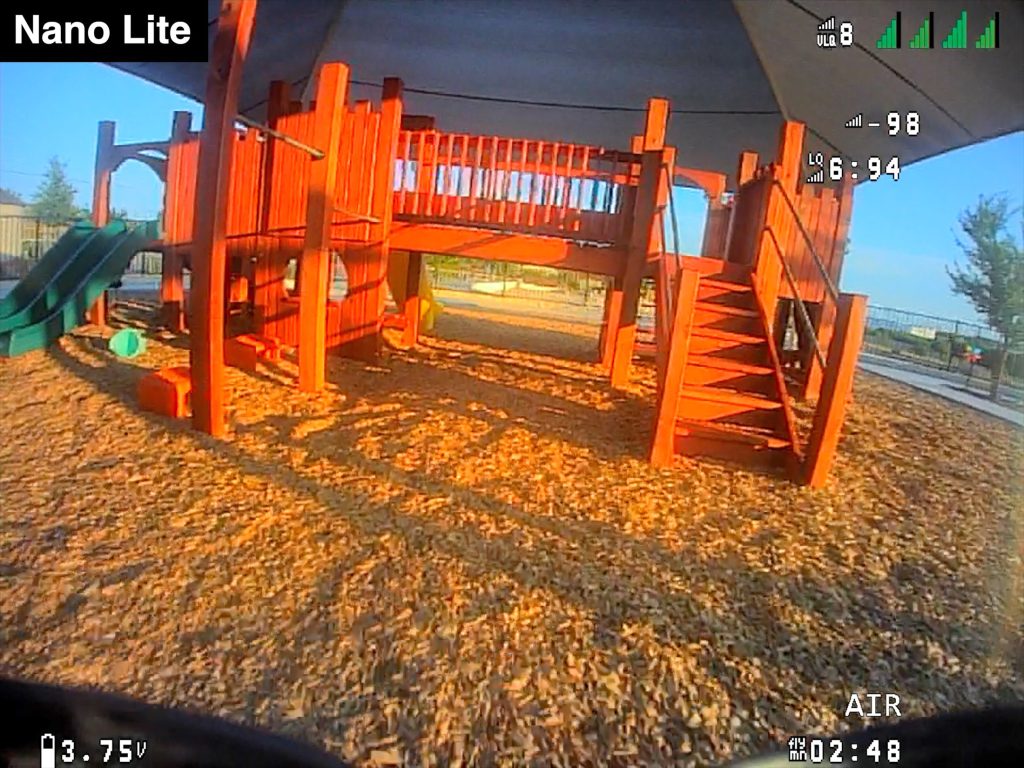
Detail and sharpness on the Nano Lite are a bit lacking compared to the larger cameras. This is unsurprising considering the much smaller lens on this camera, and I didn’t find it to be distracting in flight. The level of detail from the Nano Lite is significantly better than any analog FPV camera I’ve used, and I’m able to pick out details and textures easily.
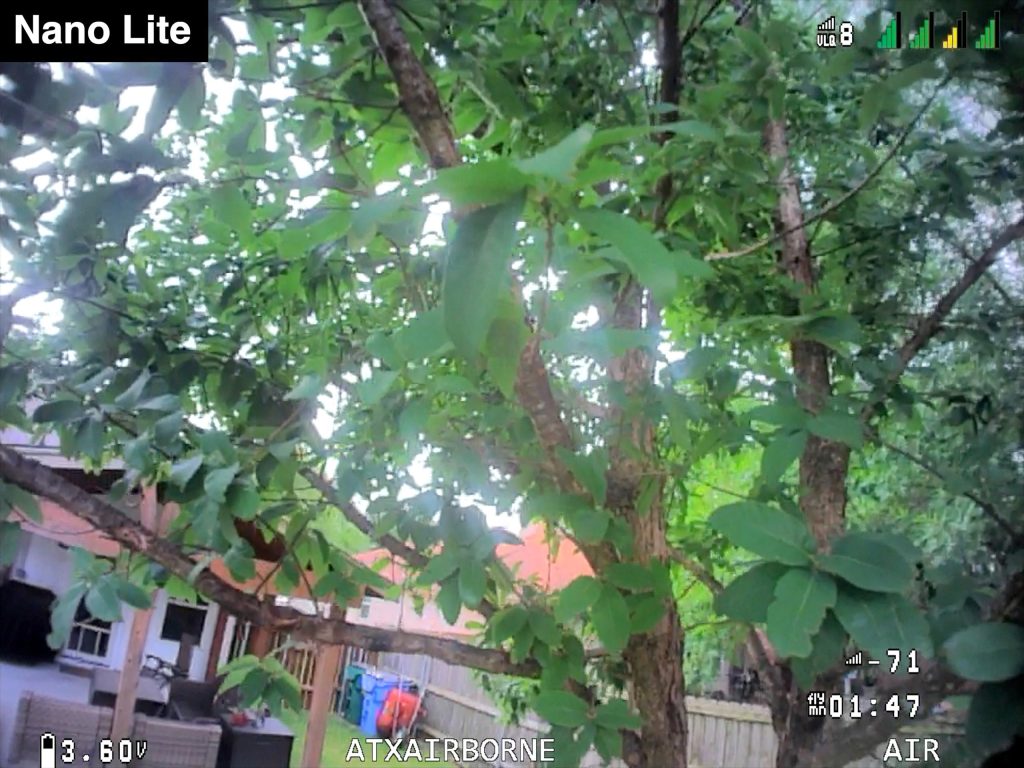
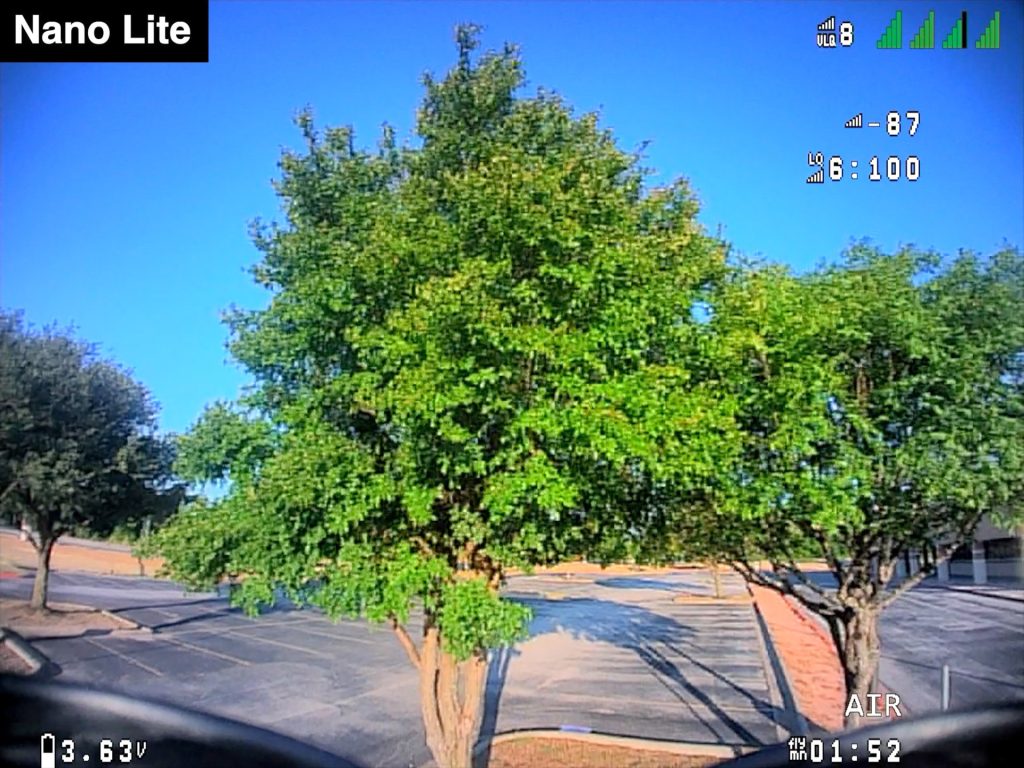
One downside to the image from the Nano Lite is that it tends to be more hazy than the other newer cameras from HDZero.This difference is present in most flying situations, indoors and out, but is most apparent in uneven lighting such as near sunrise and sunset. The image has less contrast and less overall clarity compared to a camera such as the HDZero Nano V2. Since these cameras use the same sensor and image processor, this shortcoming is most likely caused by the lens in the Nano Lite.
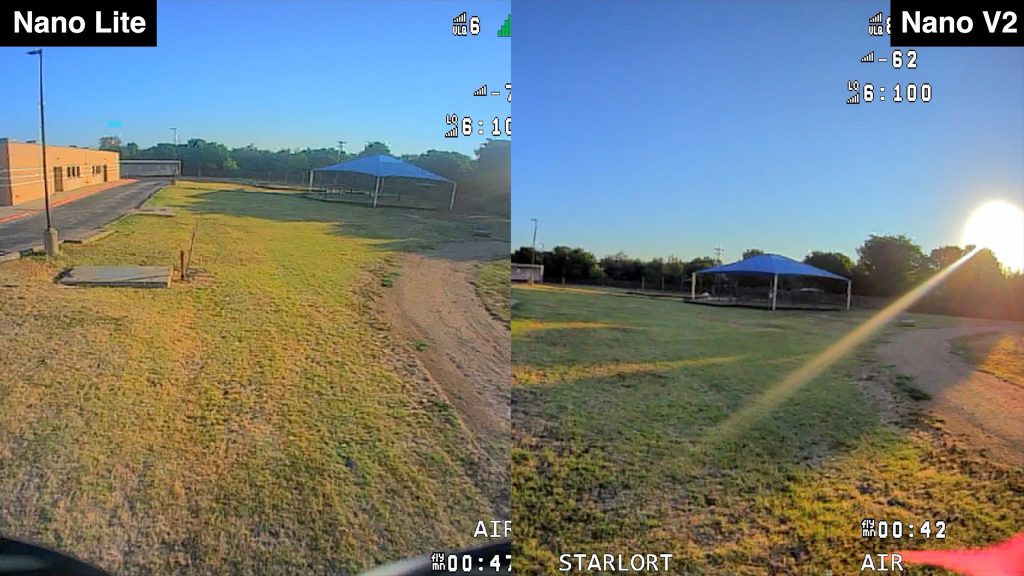
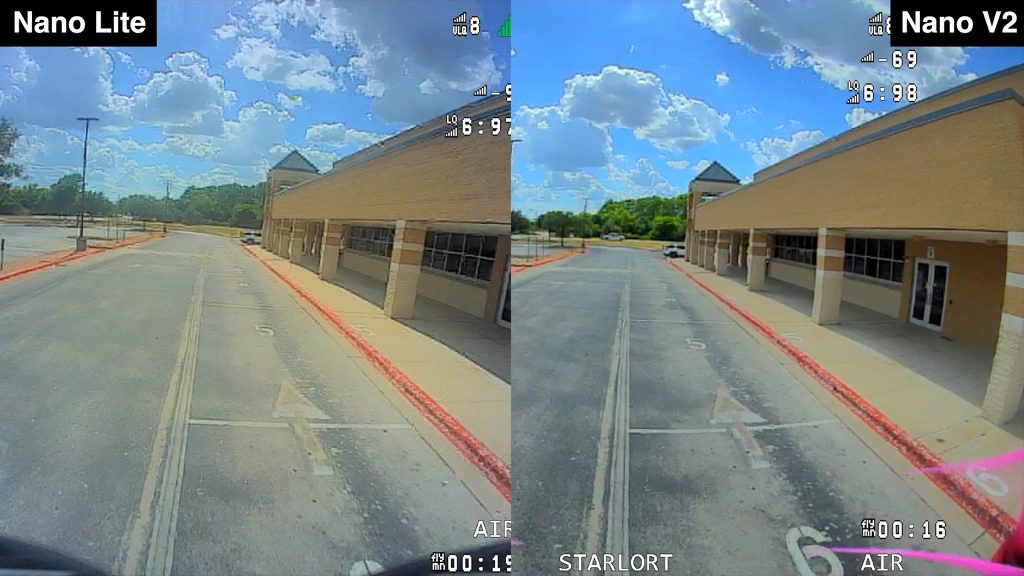
Dynamic Range and Glare
While the Nano Lite handles dynamic range in darker areas well, I found it to struggle with bright highlights or glare. I stress test FPV cameras by flying them toward the sun at sunrise or sunset to see how they handle an extremely bright light source. This is a common scenario when flying at those times of the day, and cameras have varying degrees of success at handling this type of challenge.
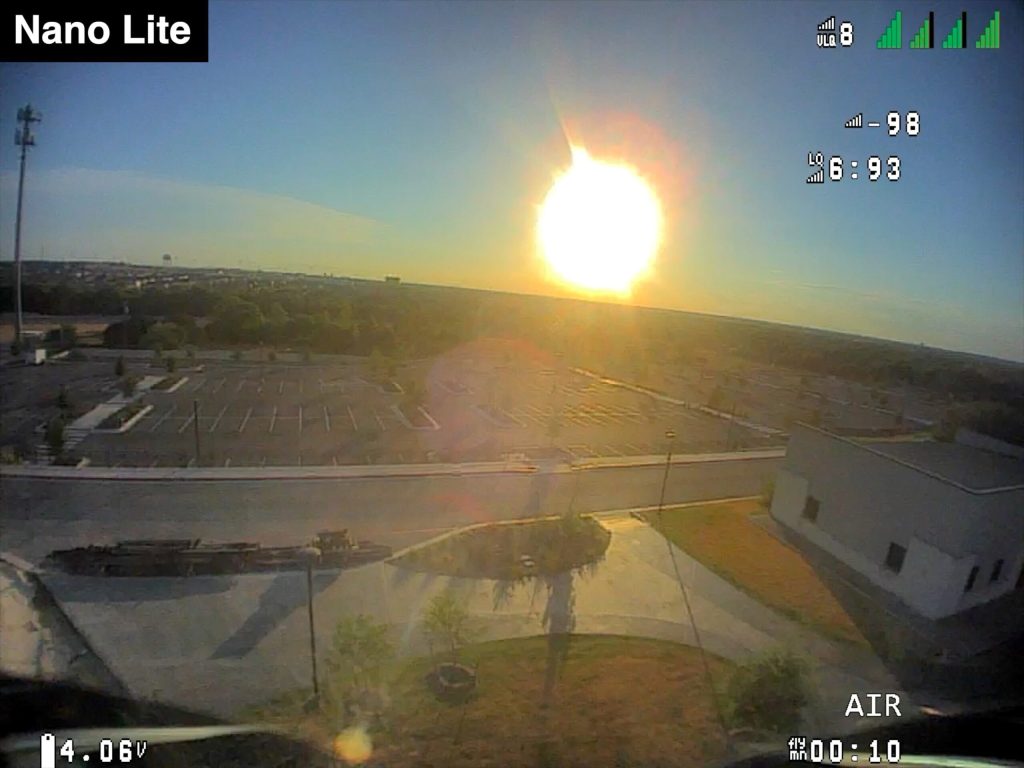
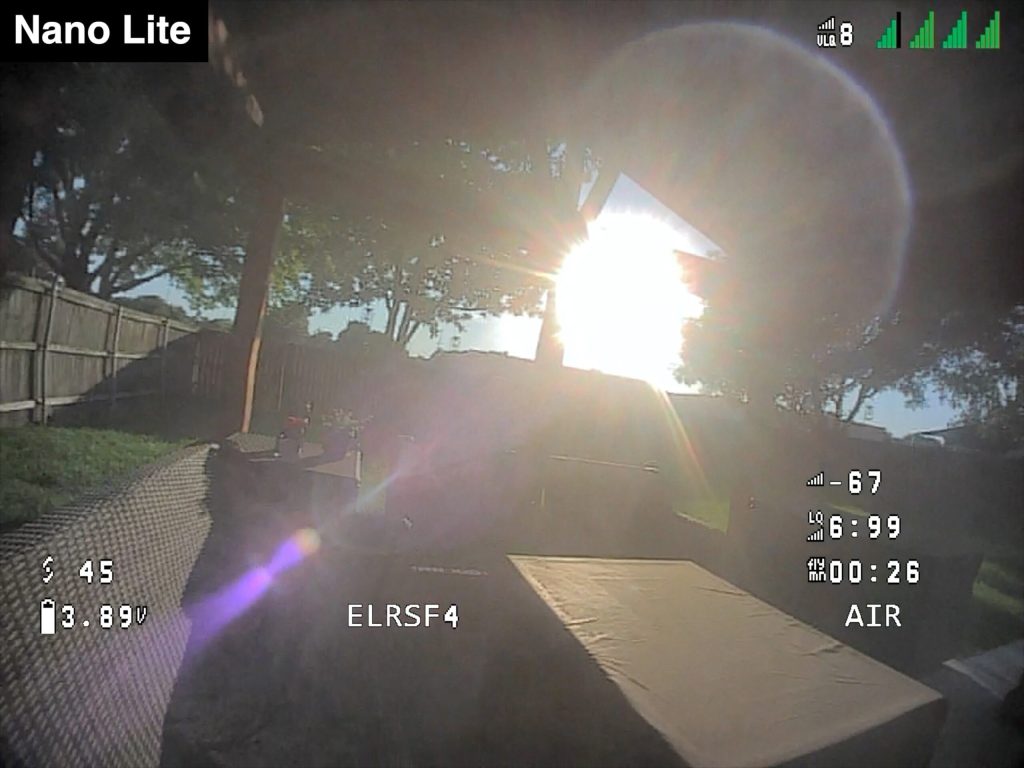
The Nano Lite handles this situation particularly poorly, with the glare tending to overwhelm the image. This makes it difficult to see any detail in the rest of the frame, and in the worst cases it can essentially blind you as long as the light source is directly in view. It’s perhaps not surprising that this happens with such a small lens, but it is a disappointment and something that affects my ability to use this camera at sunset.
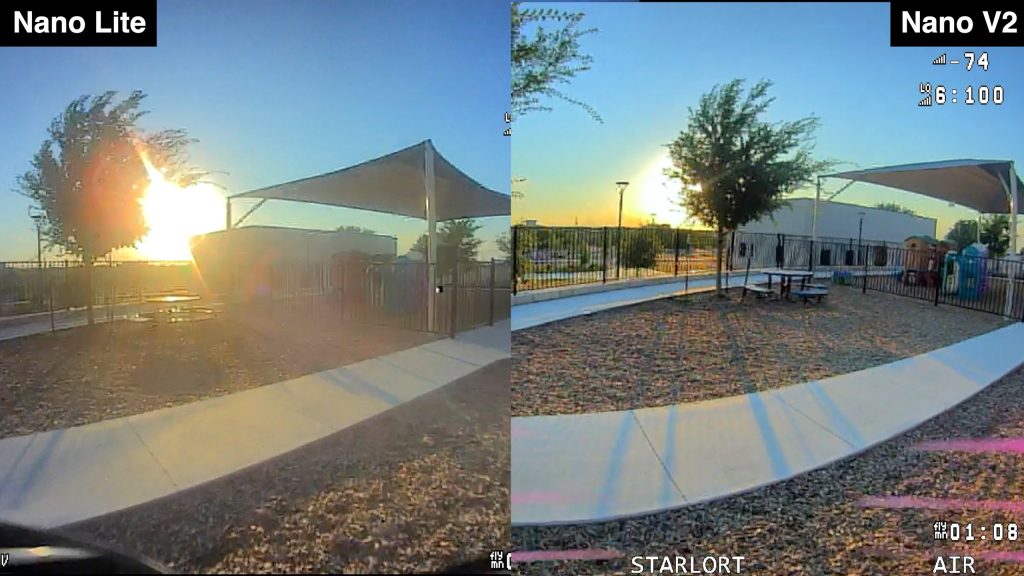
To illustrate the poor performance, compare it to the HDZero Nano V2 in the same situation. It’s immediately apparent that the Nano V2 is able to retain detail and dynamic range in the darker areas of the image, even with the sun directly in frame. This translates to better awareness and makes it much easier to navigate in the environment.
Night Flying
The HDZero Nano Lite handles night flying acceptably well, although it falls short of a top rating in this area. In a well-lit parking lot, I had no trouble seeing where I was flying, and the camera retained a decent amount of detail and sharpness.
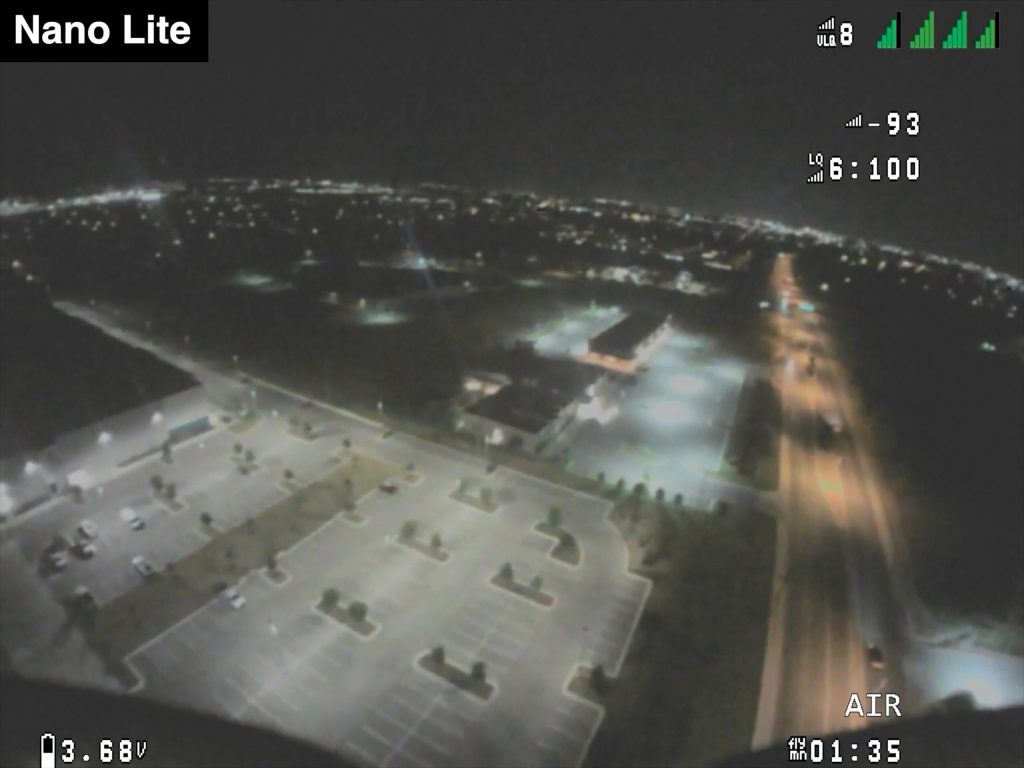
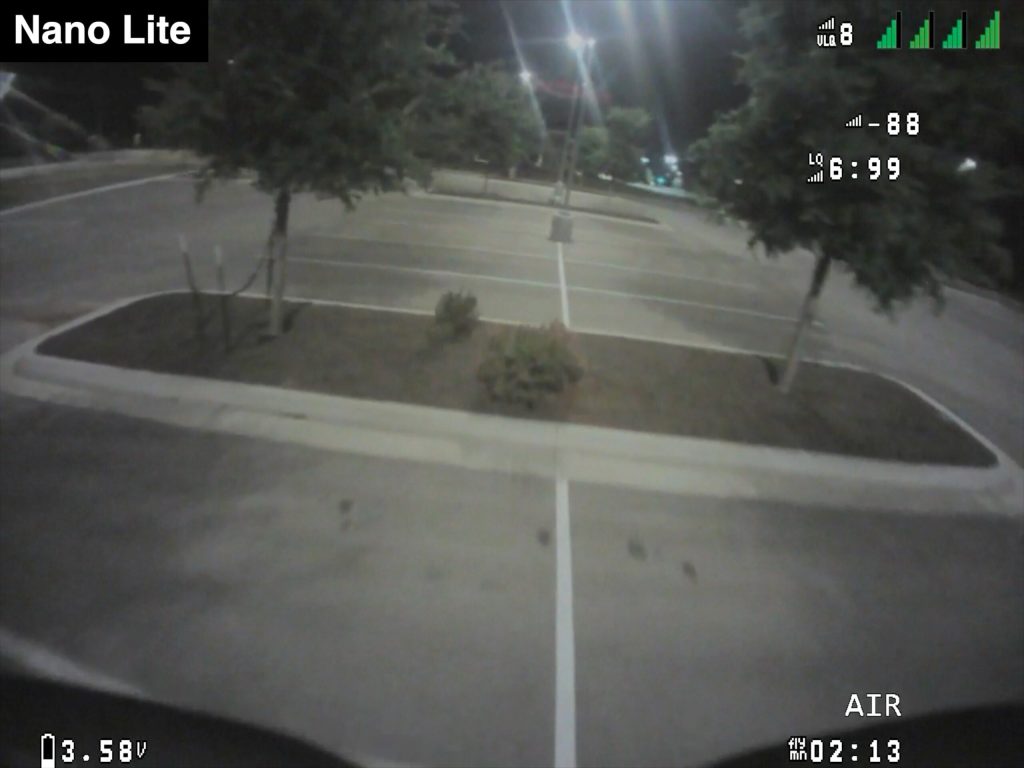
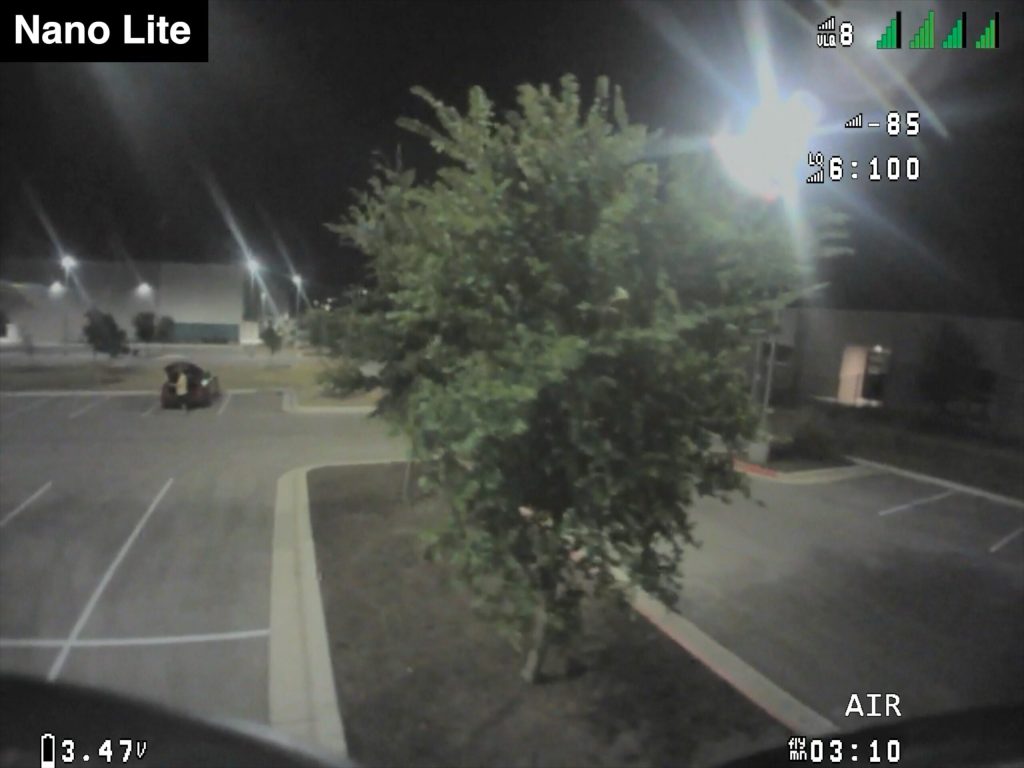
Noise in darker areas remained low throughout my testing, especially with the Max Gain setting disabled. I’ve found that this setting is generally unhelpful unless you’re in an extremely dark environment with no light at all–in all other cases, you’ll see a better image in the dark with that setting disabled.
However, the Nano Lite can’t match the night performance of cameras such as the HDZero Nano V2 or Foxeer Digisight 3. Due to the small lens, it’s unable to gather as much light as the other cameras, and has to increase the sensor ISO as a result. This results in an image that is more noisy and less defined, with less color saturation than the larger cameras.
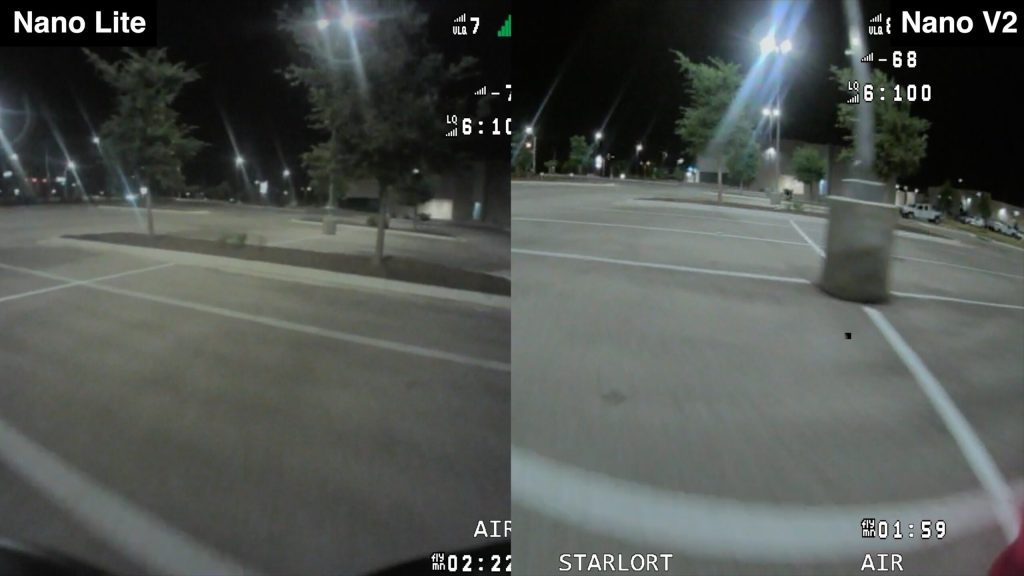
The Nano Lite is a fine night flier, and I feel confident using it in the dark, but it just can’t match the performance of the other cameras in the HDZero lineup in this situation.
Field of View (FOV)
The HDZero Nano Lite offers three aspect ratio modes: 4:3, 16:9 Crop, and 16:9 Full. Each of these modes behaves very similarly to the other HDZero cameras.
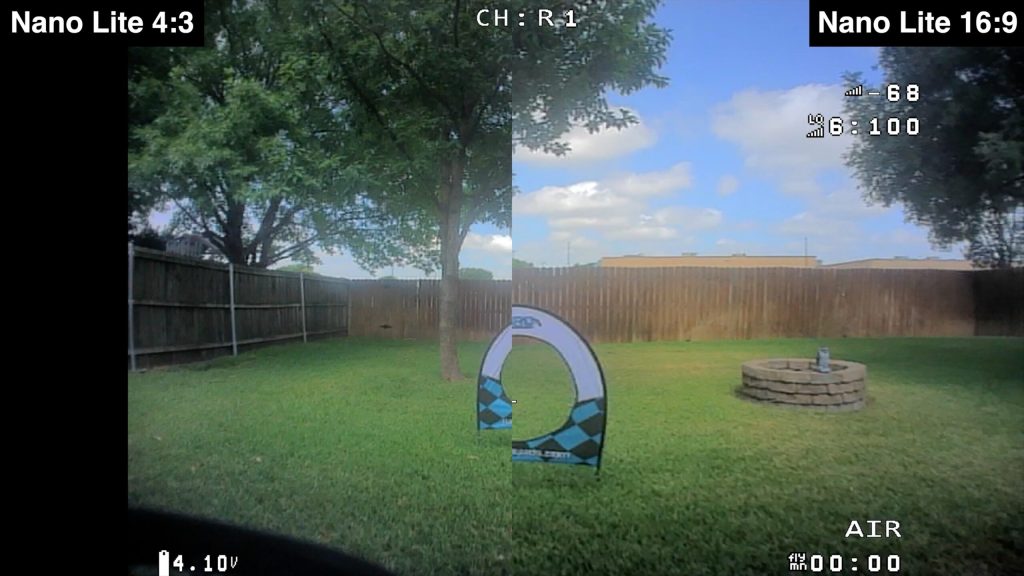
The 4:3 mode offers an increased vertical field of view over the 16:9 Crop mode, with the horizontal field of view being similar between both. In both modes, the overall field of view is generally a bit less than the other HDZero cameras, although it’s not a significant difference. Many whoop pilots prefer an extremely wide field of view for indoor flying, and the Nano Lite may fall short of their ideal field of view, but I had no trouble flying with the camera.

One upside to the Nano Lite is that I found the lens to be quite rectilinear, with very little fisheye distortion on the edges. This camera performs much better than the HDZero Nano V2 in that regard.
The Nano Lite also offers the new 16:9 Full aspect ratio mode, which uses the entire area of the 16:9 sensor to provide the widest possible field of view. As it does on the other cameras, this mode does cause heavy vignetting with the supplied lens. It does present an interesting possibility of increasing the available field of view by changing the lens, but I haven’t seen any suitable lens replacements at the time of this writing.
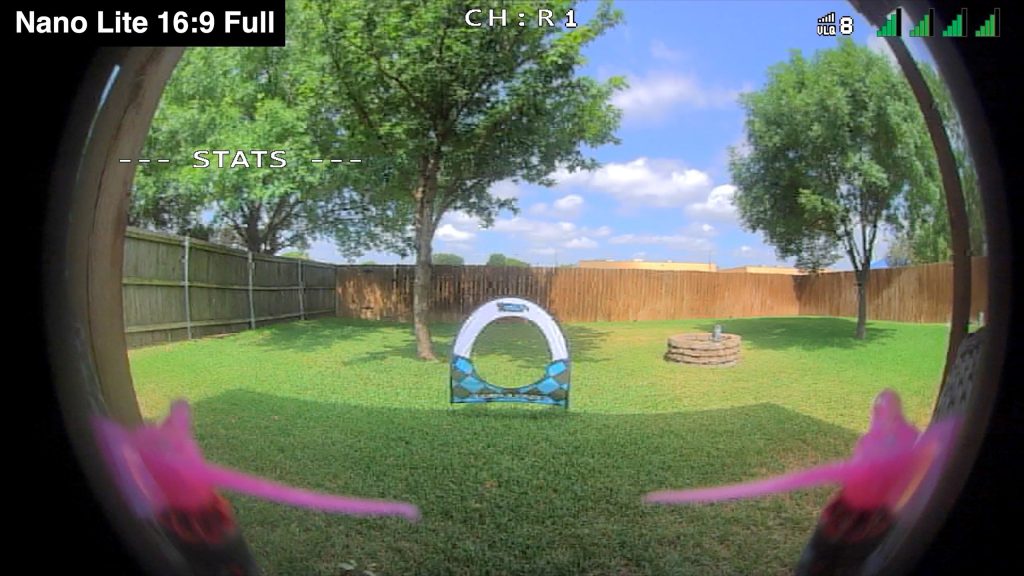
Buying Recommendations
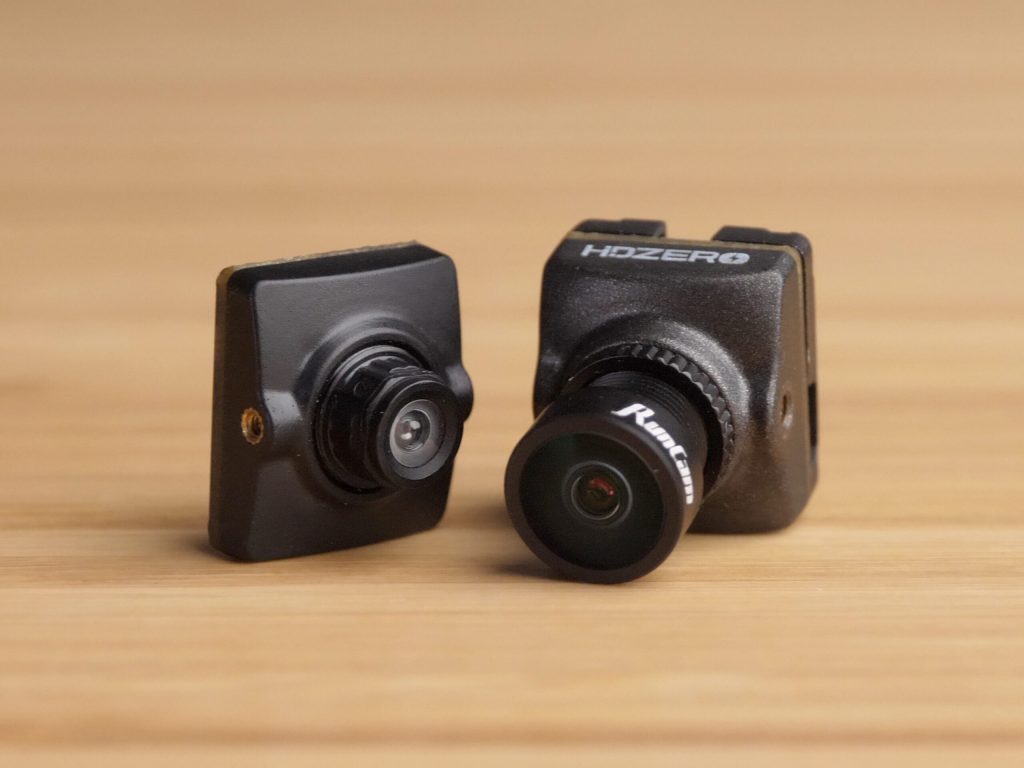
The HDZero Nano Lite fills a position at one of the extremes of the HDZero lineup. It’s by far the lightest weight camera available for HDZero, coming in at well under half the weight of the next lightest option. But it also makes clear tradeoffs for that smaller size with its lessened detail, sharpness, and glare handling.
In my opinion, the HDZero Nano Lite is a tool for a specific job, rather than a jack-of-all-trades nano camera. If you’re building a whoop or a micro where every gram of weight matters, the Nano Lite is clearly the right tool for the job. It offers impressive performance for its size, and is a significant upgrade over any analog camera.
But if you’re looking for a general purpose nano camera for larger builds, I think you’re better off with the HDZero Nano V2. As long as your build can handle the heavier 4.25 gram weight, that camera provides better performance in all situations than the Nano Lite.
Final Thoughts
As someone who flies mostly digital FPV, the availability of the HDZero Nano Lite makes me excited about 1S whoops again, because I can now get the same great experience that I’ve gotten used to on my larger drones. It’s not a perfect camera by any means, but it’s great to have options at all sizes and weights, and this camera is giving us greatly improved image quality for these smaller and lighter drones.
Where to Buy
You can find the HDZero Nano Lite at the following stores:
You can also find the Nano Lite as part of the HDZero Whoop Lite bundle, which includes the Nano Lite camera, Whoop Lite VTX, an antenna, and a MIPI cable, all at a discounted price. It’s available at more stores: